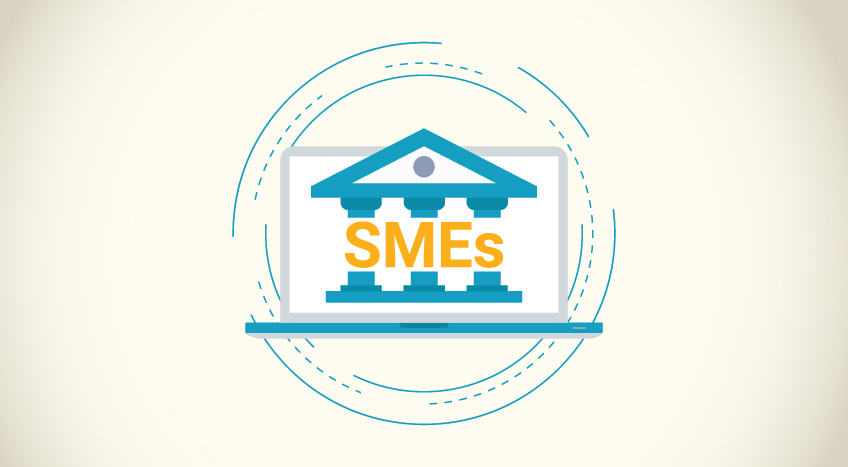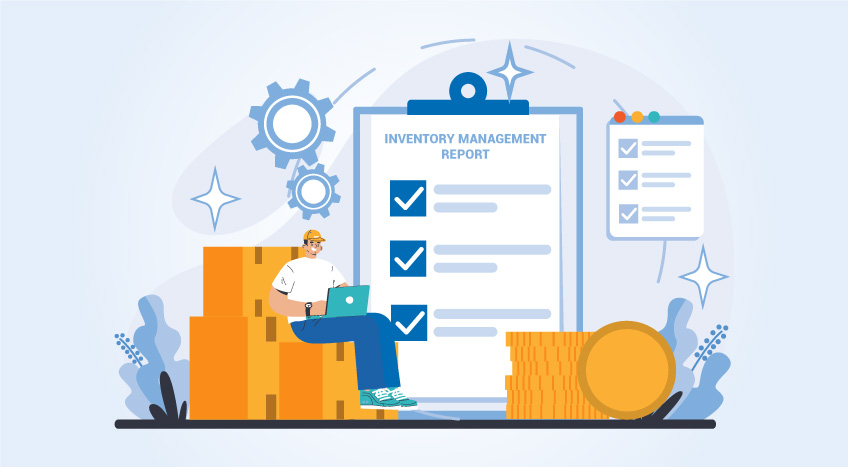- What is the break-even point?
- How to calculate break-even point with formula?
- Break-even point example
- When is a break-even point analysis important?
- Use business software solution for better insights
What is the break-even point?
The break-even point is when the total expenses of your business are equal to the total sales you make. In this situation, you are neither experiencing a loss nor a profit. You are getting the same amount of money that you are spending on running your business. When you are a small business and you reach the break-even point for the first time, it shows that you are going in the right direction because your expenses don’t exceed your total number of sales. When your revenue exceeds the break-even point, it shows that you are making a profit. When your revenue falls below the break-even point, it shows that you are incurring losses. The break-even point is calculated using the break even point formula.
How to calculate break-even point with formula?
There are two popular methods that are often used to calculate the break-even point using the break even point formula. Both these methods require you to know your fixed costs, variable costs, and sales price. The fixed costs are those which don’t depend on the volume of sales such as rent, insurance, taxes, and loan payments. The variable costs are those which are directly dependent on the sales volume such as manufacturing costs, commissions, packaging, and labor costs. The selling price or sales per unit is the price at which you are selling each product to your customer.
| What is the NOPAT Formula? – Net Operating Profit After Tax | Invoicing And Billing Software in USA That Best Suits Your Business |
Break-even point per unit formula
The break even point formula per unit is as follows.
Break-even point per unit = Fixed costs / (Sales price per unit – Variable costs per unit)
Break-even point in sales dollars formula
The break even point formula in sales dollars is as follows.
Break-even point in sales dollars = Fixed costs / Contribution margin
The contribution margin = (Sales price per unit – Variable costs per unit) / Sales price per unit
Break-even point example
Let us say that Albert in Washington wants to know the break-even point for pens that he is going to sell. He calculates the fixed costs and variable costs which amount to $1,000 for one month and $0.10 per pen manufactured respectively. The sales price is $1.3 per pen.
The break even point formula per unit is equal to fixed costs / (sales price per unit – variable costs per unit). This means 1000 / (1.3 – 0.10) = 833 units. This means Albert needs to sell 833 pens in a single month so that he can reach the break-even point where his expenses are equal to revenue.
The break even point formula in sales dollars is fixed costs/contribution margin. In this case, let us calculate the contribution margin first which is sales price per unit – variable costs per unit divided by sales price per unit. This means (1.3 – 0.10) / 1.3 which equates to 1.2 / 1.3 that equals to 0.923. The break-even point in sales dollars is 1000 / 0.923 which is $1,083. This means Albert needs to sell $1,083 worth of pens to break-even. If he sells more, then he will enjoy profits but if he sells less then he will incur losses.
When is a break-even point analysis important?
A break-even point analysis is crucial for startups. It aids in helping you gain insight into whether a product decision you are about to make is a viable one or not. This can help you avoid costly mistakes in the future and save you investment. It can save you the effort too. Imagine if you went ahead with an idea without a break-even analysis and ended up realizing that the idea wasn’t successful despite spending all your money, time, and effort. Break-even point analysis saves you from such problems from the start. It even helps you design your pricing strategy so that you can make good profits from your products.
If you are an existing business then the break-even point can prove to be beneficial when you are changing certain aspects of your business. This can be changing the distribution model or anything that changes the costs. In any of these scenarios, a break-even point analysis helps make better decisions. Break-even point analysis is excellent when you are thinking of manufacturing a new product. This is specifically true for those products that are going to be costly. If you perform a break-even point analysis then you will know whether the goal is achievable or not and whether it is a good idea to go about manufacturing the product.
What are the strengths of break-even point analysis?
The strengths and benefits of break-even point analysis are as follows.
Lowers risk
Break-even analysis reduces risk of going through with ideas that may not be as viable as initially thought. While you might have a breakthrough idea, it might not be the best option in the current scenario. Or it might be way too long before you see actual results and enjoy profits. Break-even analysis helps you lower your risk of going through with such ideas as it gives you a realistic picture of profitability. You can then decide accordingly whether you still want to pursue your idea or not.
Aids in setting price
Using the break even point formula for break-even analysis makes it easier for you to properly price your products. Product pricing is crucial as you need to have a balance so that your customers are happy buying from you and you are able to enjoy profits from selling it. Break-even analysis shows you the best price that you can set so that it is beneficial to both parties but most importantly to you. It provides a framework so that you can decide on how to price your products without incurring losses along the way.
Helps with funding
Break-even analysis can even help with funding. Business owners use break-even analysis as a part of their business plan because of how crucial it is. If you are a new business then a break-even analysis can enable you to get the funding you need. This can work for businesses that are already running for a few years too. Break-even point analysis prepares you and shows you if you might need to take debt in the future.
Aids in setting targets
The break even point formula shows you how much you should sell so that your expenses and revenue balance. This helps set real targets which can be helpful for your sales team. If there is a realistic target then your team knows what to work towards rather than just work aimlessly. Break-even analysis shows the time frame during which the targets must be met and how many products need to be sold. This makes it easier to reach targets and minimizes confusion.
What are the weaknesses of break-even point analysis?
While the break-even point analysis is great, it isn’t perfect. Here are some of its limitations.
Simplicity
Break-even analysis is realistically applicable for those businesses that work with only one price-point. That is, if there are many prices and various products, then the break-even analysis might not be the best course of action. It might need to be done regularly as costs fluctuate or change.
Based on data
The accuracy of data used in the break even point formula dictates whether you can trust the results or not. This means only reliable data is needed. This can not always be the case because of the constantly changing costs.
Doesn’t account for demand changes
The break-even analysis doesn’t take demand into account which can vary. The demand for your products is dependent on many factors which makes it an important consideration. However, break-even analysis doesn’t take that into account which means it is not completely accurate.
Don’t factor competition
When you use the break even point formula for break-even analysis, you are ignoring the competition. Competitors can affect the demand for your product. For instance, if a new competitor launches its products, then it can affect your break-even point. This means it isn’t completely reliable.
Use business software solution for better insights
A single financial metric won’t do the trick of telling you everything you need to know. This applies to break-even point analysis as well. Although the tool is highly beneficial, it shouldn’t be the only tool that you use to analyze your business. You need to calculate other metrics to get a more realistic and reliable view of your business financial health. This is possible only when you have solid data. A business software solution like TallyPrime is a robust solution for businesses that care about storing data and making sense of it to make vital decisions.
Explore more Products
Best Accounting Software in USA, Accounting Software for Small Businesses in USA, Factors to Consider before Buying Bookkeeping Software for Your Business in USA, Benefits of Payroll Management Software for Small Businesses in USA, Invoicing And Billing Software in USA That Best Suits Your Business
Read more on Accounting
COGS vs Expenses, What is Revenue Recognition?, Financial Accounting Vs. Managerial Accounting, Real Estate Accounting in US Best Practices and Bonus Tips, Difference Between an Estimate, Quote, Bid, and Proposal, How to Easily Build Great Estimates for Your Projects?
Popular Articles
Differences Between Trial Balance & Balance Sheet, What is the NOPAT Formula?, What is A Pay Stub?, What Are T Accounts?, What is a credit note?, How to Find Gross Profit?, What are Operating Expenses?, What is the Gross Margin Formula?, What is the Direct Write Off Method?, What Is Interest Expense?










